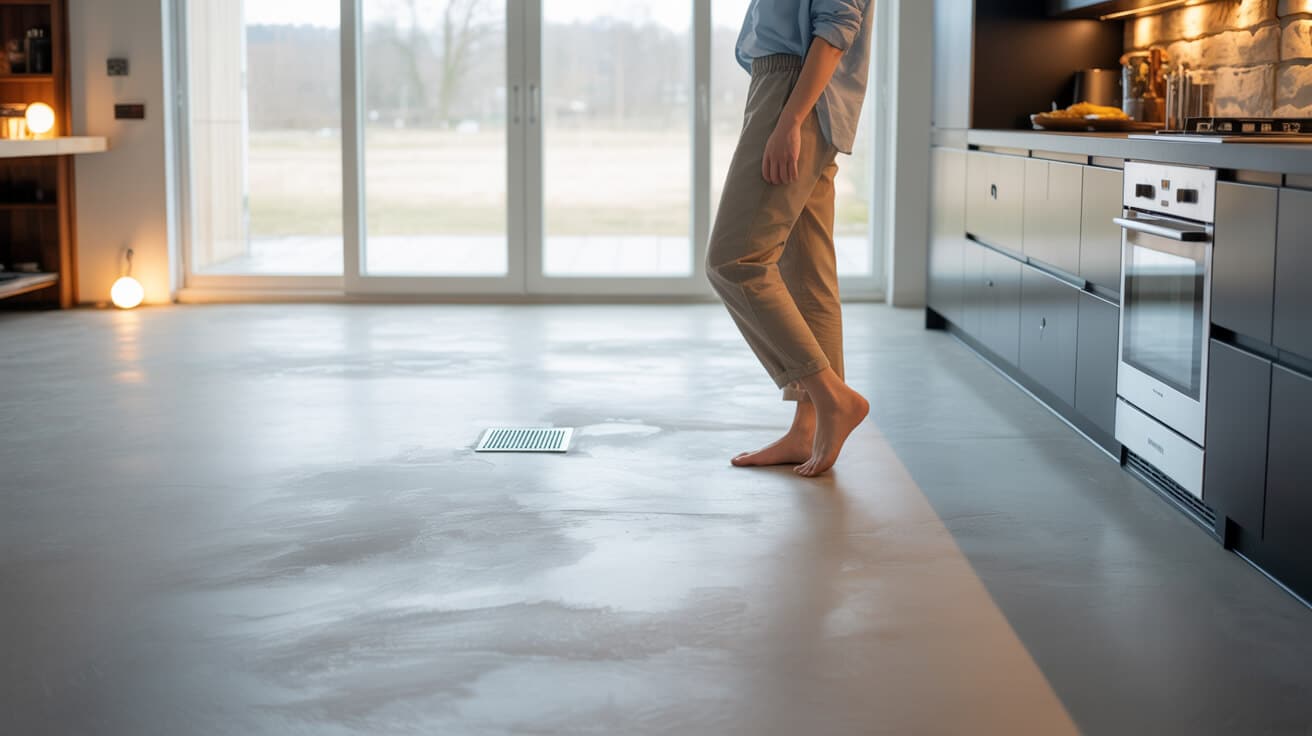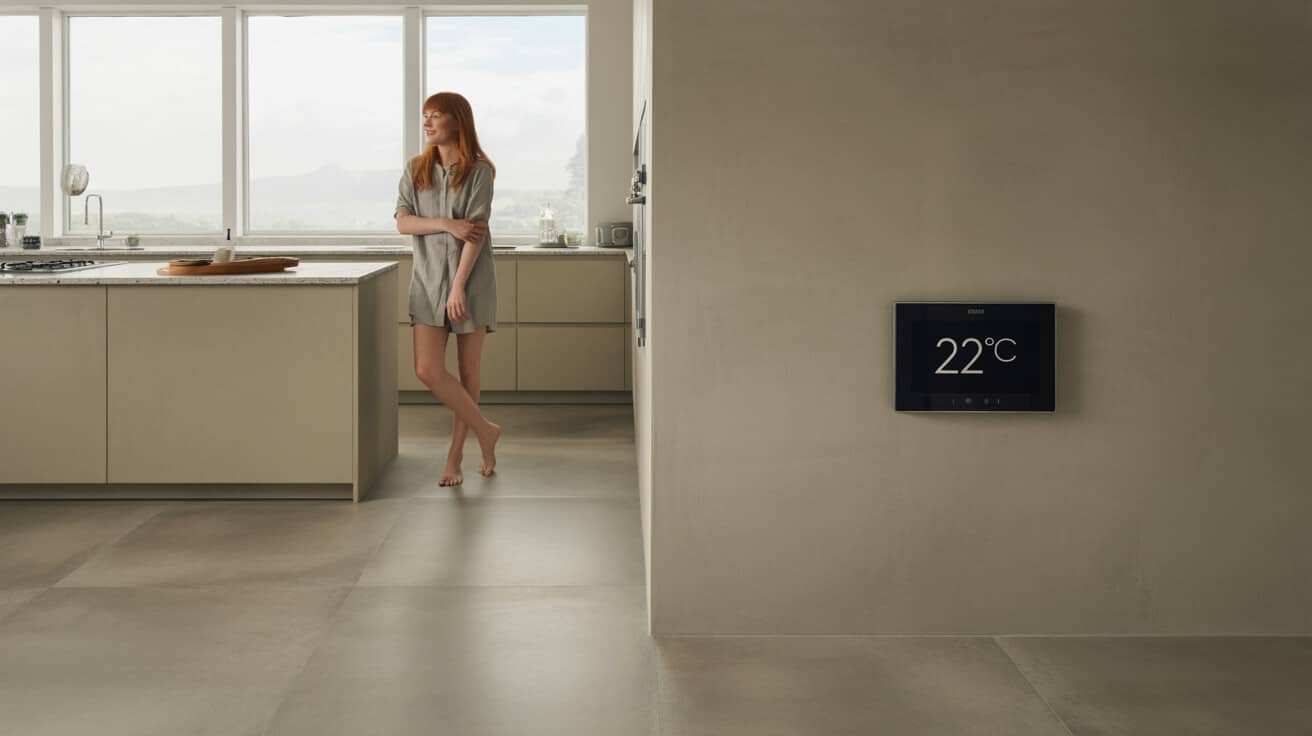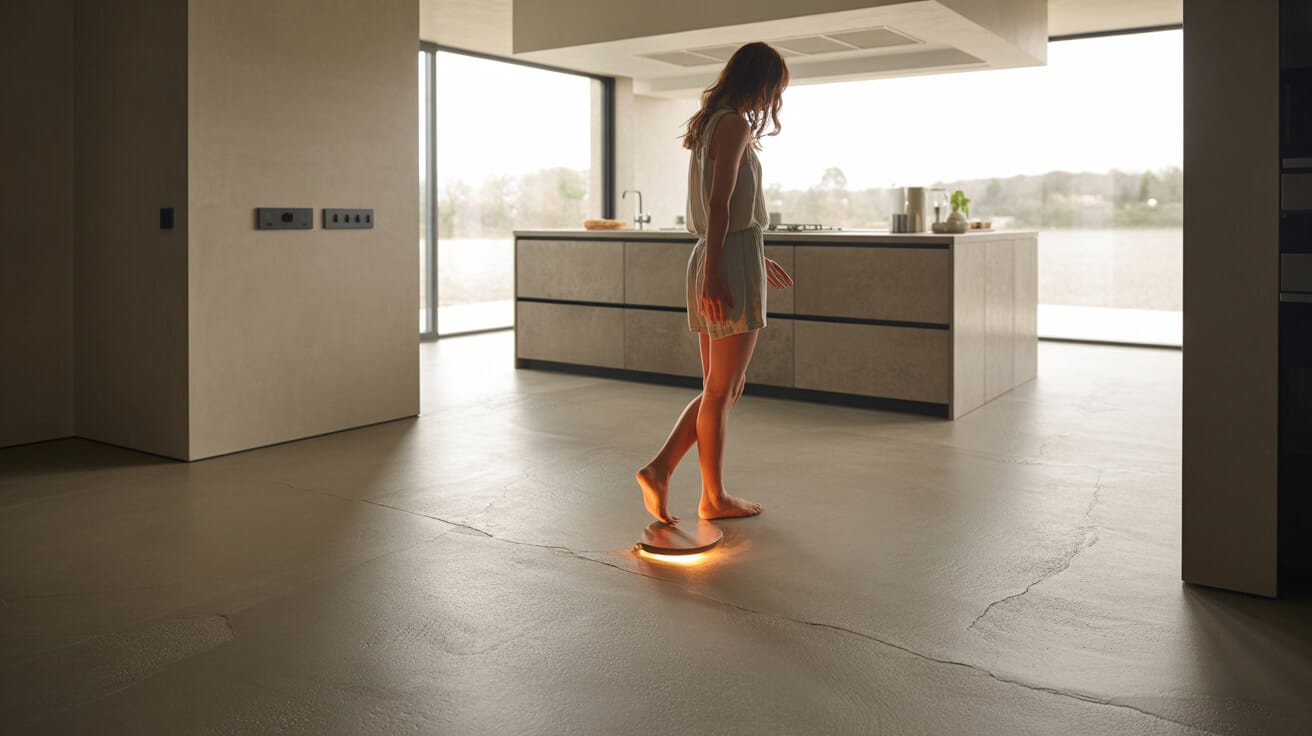Screed-based floor heating delivers controlled, radiant warmth by leveraging the physical properties of the screed as a thermal mass. Modern systems, supported by companies such as Plumbers 4U, couple advanced installation methodology with digital controls for robust comfort, energy efficiency, and low maintenance requirements. The system’s integration with both new builds and retrofits allows property owners and managers to balance performance, lifecycle value, and regulatory compliance.
Etymology and term origin
The term “screed” arises from the Middle English “screde,” initially defining a tool or board for evening surfaces, and by extension, the thin layer of concrete or mortar applied for final floor levelling. In the context of floor heating, screed serves as both a structural and conductive carrier, optimising transmission of warmth from embedded elements. “Underfloor heating” denotes any system that delivers heat from beneath the finished surface, setting it apart from wall- or ceiling-mounted solutions.
Overview and context
Underfloor heating systems that utilise a screed layer are engineered to maximise the principles of radiant and conductive heat transfer. By uniformly distributing warmth via a large, contiguous floor surface, these systems facilitate gentle thermal gradients and minimise air convection currents. Integration with contemporary building management systems and compliance with energy conservation codes have positioned screed heating as a critical component for low-energy housing, institutional buildings, and commercial properties. Plumbing and heating professionals, including providers like Plumbers 4U, ensure these installations align with local codes and evolving technological standards.
History
Ancient heating systems
Radiant floor heating has historical precedent in the Roman hypocaust and other ancient technologies, where heated air or water was circulated under floors for space conditioning. Similar practices appear in Korean ondol and other early construction forms.
Industrial transition
The industrial era introduced advances in cast iron and steel pipe production that allowed early hydronic systems to move from wall-mounted radiators toward more experimental floor-based designs, limited by pipe material limitations and moisture control.
Modern system evolution
The introduction of resilient synthetic pipes (PEX, PERT) and flowing screeds in the late twentieth century enabled reliable, scalable systems suitable for both residential and large commercial settings. Digital zoning, improved insulation materials, compatibility with Condensing Boilers and heat pumps, and standardisation through building codes have fostered wider adoption and increasing sophistication.

System description and layers
Subfloor and insulation
A stable, level subfloor forms the base for insulation, which is commonly rigid PIR or XPS board. The insulation depth is specified based on local regulation and thermal performance targets, blocking thermal bridges and minimising downward losses.
Pipework or cables
Hydronic variants consist of continuous plastic pipes, typically of 16mm diameter and 2mm wall thickness, arranged in serpentine or spiral loops at 100–200mm spacing, according to heating demand and geometry. Electric models use resistive cables or pre-assembled mats for localised or small-room applications.
Manifold and control units
Watertight manifolds, fabricated from stainless steel or polymer, distribute and regulate flow to each circuit, supporting pressure balancing, integration of mixing valves, and connection to programmable actuators. Control units, whether wall-mounted thermostats or remote-access digital panels, schedule and modulate system operation for each zone.
Screed layer characteristics
The screed itself is comprised of sand–cement, anhydrite, or proprietary flowable compounds formulated for optimal thermal conductivity and rapid installation. Typical layer thickness ranges from 50mm to over 75mm, with crack-inhibiting fibres sometimes incorporated. Curing time, moisture testing, and gradual system heat-up cycles are critical for preventing cracks and ensuring longevity.
Finished floor integration
After sufficient drying, compatible floor coverings such as ceramic tile, engineered wood, or luxury vinyl are installed, with selection guided by their thermal resistance. Thicker finishes or high-insulation carpets are avoided or specified only with suitable system derating to preserve heat output.
Scientific and technical principles
Radiant and convective heat
Primary heat emission derives from conduction into the room-facing floor surface and subsequent radiation upward, with secondary effects from gentle conduction and convection into the room’s air. The absence of high-temperature emitters supports consistent comfort at lower operating temperatures.
Thermal mass and response time
The screed’s relatively high specific heat acts as a buffer, storing and releasing heat smoothly but delaying response to setpoint changes. As a result, system controls are programmed to anticipate occupancy patterns, using weather compensation or smart learning to optimise efficiency and responsiveness.
Hydraulic balancing
Precise, zone-specific flow rate adjustment avoids uneven floor temperatures and energy waste. Design standards require careful calculation of circuit lengths, pressure drops, and supply water temperatures based on load, insulation, and property dimensions.
Zoning and smart control logic
Modern control systems support granular scheduling, temperature monitoring, and climate adaptation in response to both internal and external factors. Integration with cloud-based or app-driven interfaces fosters user engagement, allowing your organisation to manage comfort settings and optimise efficiency across multiple properties or rooms.
System variants and classifications
Wet (hydronic) systems
Water-based systems, preferred in medium- to large-scale projects, couple with condensing boilers, heat pumps, district heating, or solar sources. Their ability to operate at low flow temperatures improves compatibility with renewables and energy-efficient plant.
Electric and mixed methods
Electric cable or mat systems deliver rapid heat-up and are favoured for bathrooms or retrofits, where connection to hydronic circuits is impractical. Some installations combine local electric and central hydronic heating for user-driven flexibility.
Anhydrite, sand–cement, and flowing screeds
Modern self-levelling anhydrite screeds distribute loads evenly over piping or cabling, reducing air gaps and thermal resistance. Sand-cement remains prevalent due to wide availability, with advancements in admixture technology enhancing thermal and mechanical properties.
Low profile and retrofit options
Slim-panel boards, dry screed panels, and micro-pipe technologies enable installations over existing floors without large step-up, suitable for refurbishments or upper-storey retrofits.
Hybrid heating systems
Combined emitter installations, deploying both underfloor and radiators or convectors, address diverse room geometries and user expectations, commonly managed through separate zone valves and programmable logic.
Installation methods and process
Pre-installation assessment
Before system installation, the substrate is checked for levelness, moisture, and structural stability. Insulation and edge expansion strips are fitted, defining zone boundaries and minimising lateral heat losses.
Layer construction and setup
Installers set out system loops from manifold to extremity, recording pipe routes for future servicing. Manufacturer-specific fixing rails, staples, or trays secure pipe at specified intervals and radii to optimise efficiency and prevent kinking.
Pipe/cable fixing and testing
Rigorous pressure or electrical continuity testing precedes screed pour, verifying system integrity and catch potential leaks, shorts, or connection failures before components are buried. Testing results are documented for both warranty and compliance verification with Building Regulations Part L and BS EN 1264.
Screed application and curing
Material is delivered and levelled across the installation in one continuous pour to avoid cold joints. Controlled curing (typically 3–7 days for sand–cement, longer for anhydrite) is monitored, with gradual reintroduction of system temperature over one to two weeks post-cure.
Commissioning and activation
The system is commissioned via stepwise activation—ramping up flow temperature incrementally, monitoring for leaks or irregularities, and calibrating controls. Handover includes logbook documentation, configuration settings, and a maintenance schedule.

Equipment, materials, and tools
Core system components
- Pipework: Cross-linked polyethylene (PEX), polybutylene (PB), or EvoH barrier pipe for water systems.
- Manifolds: Modular manifolds with shutoff valves, actuators, and flow metres.
- Mixing valves: Provide temperature regulation by blending supply and return water.
- Thermostatic and digital controls: Interface for user and zone management.
- Screed/insulation materials: Conforming to BS EN standards, PIR or XPS for insulation, fibre-reinforced or flowing screed.
- Edge insulation: Foam perimeter strips to accommodate expansion.
Installation tools and testing devices
- Distribution boards: For electrical zoning and protection.
- Laser levels, moisture metres, and slab testers: For pre-installation surveying.
- Pipe press tools, clip guns, pressure testing pumps, multimeters, and IR cameras: For secure installation, validation, and diagnostics.
Control and monitoring technologies
- Zonal thermostats, wireless relays, and sensor arrays: For integrating operational data.
- Remote/app-based interfaces: For user-managed scheduling across properties or rooms.
Supplier and manufacturer ecosystems
Major system suppliers include Nu-Heat, JG Speedfit, Uponor, Heatmiser, Wavin, and others. Comprehensive installation from reputable providers such as Plumbers 4U supports seamless component sourcing, installation, and maintenance over the lifecycle.
Operation and use cases
Domestic applications
Homeowners select screed underfloor heating for new builds, renovations, or luxury expansions, seeking responsive, undetectable heating and improved air quality. High-specification installations align with your asset value objectives and contemporary interior design.
Commercial and public sector uses
Property managers and facilities directors benefit from ease of zoning, reduced maintenance, and compatibility with large-area energy management strategies in offices, retail spaces, educational buildings, and healthcare.
Energy and comfort outcomes
Uniform heat emission eliminates cold spots, reduces humidity-related discomfort, and stabilises floor-level temperatures. The system’s capacity for low supply temperatures fosters compatibility with decarbonization mandates and funding schemes, optimising both operational and asset value for your company.
End-user controls and optimization
Users benefit from programmable controls, adaptive scheduling (e.g., weather or occupancy forecasting), room-by-room management, and data-driven optimization, accessible via wall devices or remote interfaces.
Stakeholders, contractors, and ecosystem
- Plumbing and heating companies: are central, managing design, project management, coordination with other trades, and aftercare.
- Manufacturers and suppliers: offer system design support, product assembly schematics, and technical documentation.
- Property owners, investors, and facility managers: oversee commissioning, maintenance, and warranty record keeping.
- Certifiers and compliance officers: from local authorities, safety agencies, and warranty providers regulate adherence, signoff, and asset documentation.
- End users, including tenants and owner-occupiers,: interact with system controls and provide operational feedback.
Legal and regulatory environment
Code and standard alignment
Installations are governed by national and local building regulations, with UK-specific requirements for energy conservation (Part L), hot water management (Part G), and product approval (WRAS). System design and installation must conform to BS EN 1264 for distributed water-based heating, as well as European product directives.
Warranty and sign-off
Installers must supply pressure testing, wiring integrity records, and system logbooks to validate warranty eligibility. Building control sign-off requires installer statements and supporting documentation, ensuring asset protection and indemnity for your organisation.
Documentation and record keeping
Comprehensive handover packs from your heating provider should include circuit drawings, actuator identifiers, commissioning logs, pressure and continuity test sheets, and manufacturer datasheets, all supporting compliance and long-term performance management.
Health, safety, and environmental compliance
Well-documented protocols reduce the risk of overheating, thermal stress, or electrical fault. Approved materials guard against hygiene issues and maintain potable water standards, while expanded fire and sound certification broadens applicability in multi-occupancy or public settings.
Performance, metrics, and maintenance
Efficiency and measurement
system efficiency is tracked via heat output per unit area, flow temperature, energy consumption, and thermal comfort indices. Regular performance audits employ thermal imaging and data logs to verify system health and output uniformity.
Service intervals and care checklists
Routine care by your maintenance provider comprises:
- Annual hydraulic pressure checks (hydronic)
- Actuator and valve inspection
- Thermostat/sensor calibration
- Floor/screen temperature and humidity audit
Troubleshooting and diagnostic logic
Faults manifest as cold spots, unresponsive thermostats, or pressure anomalies; these are methodically addressed by sequential flow analysis, sensor checks, mechanical inspection, and controls interrogation.
Lifecycle management
Comprehensive logbooks and centralised digital records allow your company to track system component age, schedule timely replacements, and audit long-term performance for investment planning.
Challenges, barriers, and limitations
Technical considerations
Design and execution errors, such as uneven screed depth, sub-optimal pipe spacing, or substandard thermal insulation, introduce operational inefficiency or reduce system longevity. Retrofits may be hindered by limited floor depth or accessibility constraints.
Operational risks
Airlock, actuator, or controller failures interrupt heating or cause unanticipated cold spots, while unaddressed screed cracking may precipitate costly reworks.
Economic and market barriers
High up-front costs, extended installation windows, and owner reluctance to disturb finished floors are offset by eventual energy savings, long life expectancy, and increased asset value. In regions where skilled labour or compliant components are unavailable, uptake may be slower.
Remediation strategies
Adherence to installation standards, partnership with leading providers (such as Plumbers 4U), and investment in user education ensure value realisation. Comprehensive pre-project surveys, advanced test equipment, and thorough documentation set a foundation for problem minimization.
Impact, influence, and legacy
Screed underfloor heating has reshaped how you design and use interior space, allowing the removal of intrusive wall-mounted emitters and opening new architectural opportunities. The evolution of high-performance insulation, micro-zoning technology, and digital control platforms has created new best practices in property management and maintenance. As regulatory drivers and your organisation’s sustainability objectives advance, the system’s long lifecycle and efficiency position it at the heart of property modernization.
Future directions, cultural relevance, and design discourse
Accelerating innovation in control algorithms, machine learning, and sustainable screed materials will further optimise comfort, resource consumption, and environmental outcomes. Anticipated regulatory tightening and incentivization for low-carbon emissions are expected to grow adoption rates in all markets. The subtle integration of floor heating into your living or working space increasingly reflects ideals of invisible comfort, universal design, and healthy built environments. As developers, designers, and service providers like Plumbers 4U continue to refine installation best practices, the position of screed-based underfloor systems will intensify within the discourse on sustainable architecture and occupant wellbeing.

